Features
What is A.M.I.R.?
Accessed easily, Merged wonderfully, Invalidations handled awesome, and it is also Risk free. In another words, “It doesn’t get any better”.
The grand sum of all the concerns with this day and age smartphones comes down with the four letter word. It is also the name of the original designer Mr. AMIR who has handpicked and has pointed out to some of the most desired feature on a smartphone, not addressed before by anyone, anywhere ever. As it has been implied above, the abbreviations A.M.I.R. stands for some of the most unique features configured both in terms of software and hardware, and they each are the topic to a division as described briefly below.
1- Accessed easily:
There is only a single pair of red and green buttons to some of the nowadays average smartphones to hang up and to answer a call, but there is extra pair of buttons located at the lower end and at the bottom of AMIR Design Smartphones to serve the “A” feature, also known as the second pair. As it is shown in the right figure, in addition to a perfect balance of the Red and the Green buttons they are also situated in a way that allows the user to handle the unit by either hand (Left or Right) just as easily.
 A superior and ergonomic design of the Red and the Green buttons allows a greater ease of reach to the thumb of the user; therefore, the user’s thumb does not have to reach over to the opposite side of the unit in order to Answer, or to Disconnect / Reject a call. As a part of other features implemented to the extra set of buttons, is the plus sign on the Green button and the (On/Off) marking on the Red button. The plus sign on the Green button if activated through the setup menu, allows the user to answer to a receiving call while having the Loud-speaker activated at the same time. If the Green button is pressed twice, it will disable the Loud-speaker feature only without any delay. Another feature implemented to the Green button is the “Status @ a fingertip” function. A few of the AMIR Design Smartphones have the stand alone power On/Off button positioned on top; however, most other ones have the same 2nd Red button at the bottom to provide the function as well.
A superior and ergonomic design of the Red and the Green buttons allows a greater ease of reach to the thumb of the user; therefore, the user’s thumb does not have to reach over to the opposite side of the unit in order to Answer, or to Disconnect / Reject a call. As a part of other features implemented to the extra set of buttons, is the plus sign on the Green button and the (On/Off) marking on the Red button. The plus sign on the Green button if activated through the setup menu, allows the user to answer to a receiving call while having the Loud-speaker activated at the same time. If the Green button is pressed twice, it will disable the Loud-speaker feature only without any delay. Another feature implemented to the Green button is the “Status @ a fingertip” function. A few of the AMIR Design Smartphones have the stand alone power On/Off button positioned on top; however, most other ones have the same 2nd Red button at the bottom to provide the function as well.
2- Merged:
There is only a single type of keypad to all the units in the market as it is shown in the figure. The keypad arrangement to AMIR Design Smartphones is a different story. The designer (Mr. AMIR) breaks the unspoken barriers to boring looks by creating stylish and innovative yet practical and accommodating to fulfill the ever demanding market for a sublime Smartphone. In accordance to AMIR Design keypad principles, every two numbers to a keypad has been combined into one solid and physical piece.

Some examples would be the 2 octagons merged together, 2 half circles merged into a full circle, 2 squares merged into a rectangle, and 2 triangles merged into a rectangular dialing key. There are more examples to the key pad variations in the catalog. As a result the keys appear to be twins in 6 sections. Every even number and the pound (#) key (the second half of a key) is elevated with respect to its adjacent odd numbers plus the asterisks (*) button (the first half of a key). A majority of AMIR Design units are touch screen types. The incorporated features to the touch screen Smartphones are the same as the ones with hard keypads. The hard key arrangement is so convenient to the user that even a visually impaired person can distinguish the keys and benefit from it. Aside from its prestigious appearance it also promotes a sense of pleasure when using one.
3- Invalidations:
The function over the Smartphone appears as QS/QC feature and represented by a button in Red color family marked as such. The same button serves 3 different purposes in 3 different situations and they are as follow:

3.1. Quick Stopping or Quick Cancelling:
By pressing the button a transmittable file or a message in progress could be cancelled or stopped at no time. If the situation necessitates, the user have the option to postpone the transmission to a later opportunity. Also when in process of sending a file, for whatever the reason the user hesitates simply can benefit from the feature by accessing the option that halts the sending file.
The function is executable by up to 102% (Max.) on the progress bar.
3.2. Quick Silencing & Quick Cleaning:
Right at the moment of receiving a call that the user doesn’t want to respond, simply by pressing the QS/QC button, not only it Mutes the unit instantly, but also eliminates the Missed Call message off the display as well as all other types of histories and records from the Smartphone with the exception of the Original History which will maintain certain details to time, date and so on to the call.
3.3. Quick Selecting & Quick Cleaning:
This is to provide the users the ability in programming any individual(s) whether in the contact list or not to how many times to limit their message(s) from that very person(s). Every press of the button represents a onetime limitation up to 9 times future incoming messages, the 10th time means indefinitely and the 11th, time the loop returns back to “0” again. Once programmed on an individual(s), the application prevents any output alerts absolutely indicating any incoming messages (unless through setups the user designates an alert(s) for such event, the assigned alert occurs), but it keeps the trace in terms of date and time only, also keeping a tally of the total assigned quantity, and the number to how many times already executed on the incoming messages in both the Original History and in QS/QC assigned contact list as well.
4- Risk Free (Fingerprint Scanner):
Here is one of the most significant applications worked into the Smartphone. The physical location of FPS is over onto the lower portion of the unit’s face as a black square. FPS is dedicated to scan, confirm or to reject the authenticity of the user’s fingerprint (thumb or any other finger). FPS function secures and protects the content of the unit to the highest possible level in the world. Having people around, the passwords are prone to theft, since it is visible when applied, but the presence of FPS signals others that here is the only path and approach that is totally immune to abuse, vandalism and theft; therefore, this to be used by the authenticated individual and no one else. There are specially designed 4 directional arrow keys around FPS that together from here on referred to as the FPS Assembly.

5- Ex.O:
The abbreviation to the Blue button stands for Extra Options. It provides 3 different features in 3 different situations and they are as follow:

5.1. Quick Film & Photo @ a Finger Tip:
The feature allows the user an instantaneous access to the filming and photo menu just by pressing the button once, proceeds with the task automatically and ultimately to save them. To unlock and to access the filming icon sometimes requires much more time than what the user has; therefore, the feature is made accessible even if the unit is locked to prevent the loss of the filming opportunity. The response time of the system to activate and to comply is made possible at a blink of an eye and simply at a fingertip by the pressing of a button.
5.2. Quick & Covert Recording @ a Finger Tip:
The feature allows an immediate ability to start recording the already in progress phone conversation by press of a button without anyone noticing. Of all the possible applications to the feature, one would be when the user happen to hand over the Smartphone to someone else while in the middle of a conversation, and by pressing the Ex.O button has the ability to listen to the recorded conversation in a later opportunity.
5.3. Quick Contact Saving @ a Finger Tip:
Whenever the user receives a call whose number has not been saved, can save the particular number into the contact list through selecting the number and then by pressing Ex.O button. The application then proceeds with saving up the number automatically along with the corresponding details including:
I- The date to the first conversation event
II- The effective conversation duration (if any)
III- To record the Geo data to where the number was saved up at.
IV- An automatic recording of the first 30 seconds to the following first conversation is stored in “Quick Contact Saving @ a Finger Tip” numbers list.
Button Field:
All of AMIR Designs Smartphones have a certain collection of buttons gathered together in a specific location. They include the FPS assembly (in the center), the Accessed easily (2Gs & 2Rs) generally in the four corners, QS/QC, Ex.O (on the sides), the “Back” (per section 21 below) and the “C” button (per section 22 below) are located differently depending on the design.

6- Screen Off/On:
The Black button has to do with what the user sees on the screen directly. It has 2 different functions in 2 different situations.

6.1. Screen Off, Silent and Reverse:
When the phone is ringing, by pressing the button, the feature turns the display off and mutes the ringing simultaneously. Of the many uses, the application allows the user to avoid others in taking notice of who is calling. Although the unit is still ringing, but there is going to be no sign of it at all. This is a reversible process by pressing the button again bringing all the alerts back to life.
6.2. Any Other Receivables/Display Will be Off & Vice versa:
When talking on the phone and having to pass the unit onto others, but the user doesn’t want others to take notice of his / her incoming messages or calls (Call Waiting). In preventing so, the user can press and hold the button for 2 seconds activating the feature by an appeared icon (the Icon could be set not to appear and instead a vibration could be replaced). Any incoming messages, calls (missed calls) are masked without any notification and any trace to others. This is a reversible process by pressing the button again for 2 seconds.
7- Blinking LED:
The little LED is physically situated at the upper end and on the surface of all the Smartphones collections. The LED is capable of emitting 125 different lights of selectable colors. The colors could be selected and assigned to different group of contacts, for a collection of receivable subjects, event alerts, or for when the user does not pay attention to (as a repeating reminder), assigned either individually or in a combination to display. The displayed colors also could be selected randomly.

There is a displayed color to every subject and their components are:
I- The pause time interval to blink (once every 5 seconds as default)
II- The quantity to how many times to blink for repetitious events and the quantity to how many times to blink for every event from every contact (up to 2 times Max.)
III- The pulse length time (even up to unlimited time) In addition to what has been mentioned above, in certain models of the unit hold an array of LEDs. Segments of the LED in a group or every single one of them also could be programmed separately.
8- Stability Button (ST):
The implementation of a hard key to allow the user the choice of having the display auto rotation feature turned On or Off. It also lets the user to lock on a rotated screen to remain put. The hard key allows an instantaneous control over the feature, thus the user can focus on the task
on-hand. Just about all other units nowadays have the feature, but the control to shut it off, has to be done through lengthy menu access.
Not only this is another one of Mr. AMIR’s future looking innovative design advantage, but also it is for the sake of ease of use and practicality. The specially allocated grooves on both sides of the button are to let the user move it hassle free and smoothly.

9- The Switching On / Off Button:
This is to turn the unit On or Off. The designated On / Off button on some Smartphones are located on top while on others, it is the same second Red button.

10- The Display:
The varieties to the display screens of the collection include: touch screens and non touch screens. Some models have hard keys while others have only a touch screen to dial. They are into 5 categories as below:
I- Hard Dialing Keypad Only (Non-touch), 5 Models
II- Touch Screen Only, 4 Models
III- Touch Screen + Hard Dialing Keypad + Hard QWERTY Keyboard, 5 Models IV- Touch Screen + Hard Dialing Keypad, 7 Models
IV- Touch Screen + Hard Dialing Keypad, 7 Models
V- Touch Screen + Hard QWERTY Keyboard, 1 Model only

The Limited Edition: Model “AMIR TPPC/ G63” has a Dual Display. The primary display is a Non touch + Hard Dialing Keypad, and the secondary display is a Touch screen + Hard QWERTY Keyboard.

Note: The active touch screens are represented in pink and the none touch ones are shown in light blue.
11- AMIR’s Proprietary Coupling Kits:
There are two different sets of coupling kits, the A-Kit, and the B-Kit. A Brief description of each is as follows:
The A-Kit:
The kit includes two pairs of connectors each consist of a seven pin male and a seven pin female, providing a total of 14 connections (14 males, 14 females).
The B-Kit:
The kit includes 1 set of connectors in different shapes that has a 16 pin male, and a 16 pin female as seen in the image. Of all the 22 models, only 4 have incorporated kits. They are in 3 types as below:
Type I: The models “AMIR-D60” and “AMIR-ET49” both require 2 A-Kits and 2 B-Kits as seen in the images.
Type II: The model “AMIR-GP15” requires a set of A-Kit only as seen in the image.
Type III: The model “AMIR-PPC/G57” requires a set of A-Kit but has added 2 pairs of female connectors as seen in the images.

For a detailed specification of each coupling kits please refer to its respective model per index of the website.
12- The Ear-set Assembly:
In all of AMIR Design Smartphones, there are 3 sensors including the Proximity Sensor integrated with the ear piece unit, and they are referred to as Ear-set assembly. The implemented sensors in the Ear-set assembly convert physical parameters to electrical signals. The sensors allow the unit to measure and to display the physical parameters. The designed in sensors to the every Smartphone are:
Accelerometer Sensor (Orientation), Gyroscope Sensor, Proximity Sensor, Ambient Light Sensor, Magnetometer Sensor, Pressure Sensor (Barometer), Back-light Illumination Sensor, and Thermometer. Every single model in the collection has the ear piece, the sensors, and the related circuitries housed in a box or in a casing and only then the units are populated with them.

13- The Microphones:
A Microphone is a sensory device that converts acoustic waves to its equivalent electrical signals (analog signals) so that the received sounds after being converted to electrical signals can propagate in the circuit for further electronic manipulations and transmissions. There are varieties of principles to how microphone systems convert sounds to electric signals and they are; piezoelectric, capacitive, and bobbin (ferrite) types. The older handsets mostly used capacitive microphones. In Mr. AMIR’s collections the piezoelectric effect types of Microphones are designed in pairs. As all the smartphones do, in the collection the background noise filtration system has been designed in as well. With the exception of one, all of Amir Design models come with a pair or more of the Microphones that from here on every two would be addressed as a set.

14- The Loudspeakers:
In order to have a superior sound clarity and a greater sound distribution, they are selected from some of the best quality there is and also they are placed in and about the lower section of the display or on the sides of the unit.

15- The Cameras:
The entire Smartphone collection includes highly sophisticated video systems that have 2 separate cameras.
I– The primary camera is equipped with a minimum resolution of 12 mega pixels and video quality of 2160p@30 fps (frames per second) also known as 4K. To each sides of the camera, there is a flash, one on the left and one on the right side. With the exception of a couple of models, they are all equipped with the shutter lid and its button.
II– The secondary camera is equipped with a resolution of 5 mega pixels Min. and video quality of 1080p@30fps which is mainly designated for video calling purposes.

16- The Lock & Unlock Switch:
The sliding switch is placed on either left or right side of the units. The finger touching area of the switch is grooved in a way that produces a better grip to slide. A single slide down of the switch would lock the already “On” LCD as well as the Smartphone. Once it is locked, all the keys will be disabled (except those that are pre-designated), and after 5 seconds the LCD too will turn itself Off automatically. Another slide down of the switch has a reversal effect to unlock the unit (granted the fact of going through a preset security process), turns “On” the LCD, all the keys are re-enabled, and if the unit is not used, it will go into a sleep mode in 10 seconds.

17- Special Paste (SP):
In order to edit a text, simply a single press of the hard key button would commence the task of copying the text that has already been selected, and another press of the same key in a blank space would paste the sentence that includes the selected text, prepared for editorial. Once it is pasted on, every set of selected characters would be isolated by open and closed brackets and its in-between content would be replaced by dots (One dot for every single character only).

18- The Scroller:
The designed in horizontal and or vertical scrollers allow the user to have accessibilities to left, right, up or down, when navigating in varieties of programs. Specially designed software allows the user to have a speed control over and onto the scrollers.

19- The Mouse Ball: A spherical Ball-track with a diameter of about 1cm designed into the Smartphone allowing the user to navigate around different programs, having all desired directions available.

20- The Volume Adjusters: They are to increase or to decrease the sound volume. The designated indicating marks are either plus (+) and minus (˗) signs or by the up and down arrows over onto the adjuster buttons.

21- The Back Button: No matter where the user is in the menus, the button allows a single step backward.
22- The “C” Button: It is to clean or to erase an item.

23- The Arcade:
Some of the models in Mr. AMIR’s collection are equipped with the necessary hardware to fulfill joy stick functionality. The buttons to the
joy-stick includes 1, 2, 3, and 4 buttons positioned in the lowest part and to the right side; also across from them there are the quad-directional arrows (other inclusive quad-directional arrows and or the FPS 4 directional arrow keys could be used). In between 2 sets of buttons, the “1, 2, 3, 4” buttons set and the quad-directional arrow set, there exists a pair of buttons marked as “Start” and “Reset”. To further enhance the button sets, there are another set of 4 buttons including R1, R2, on the right corner and L1, L2, on the left hand corner.

24- Charger / PC Connector:
The exclusive connector port specially designed for Mr. AMIR’s collection to fulfill both functions as a power supply port as well as the pc connector port. There are 14 pins to the connector of which there are 3 wider pins to the left for the purpose of charging the battery, and 11 narrower pins designated to transfer data. The size of the wider pins is 0.5mm and the narrower ones are 0.25mm. They are separated by a 0.2mm gaps in-between.

25- Battery Pack:
Considering the fact that all of AMIR Design models have been created based on a solid and a common ground, but depending on the needs, space allocated, and or other limitations, some models are assigned different types and shapes of batteries. A few models are quite petite and have a non touch screen display, while other ones might have up to three multi touch screen displays; therefore, batteries with variety of current ratings, anything from 1400+ mAh all the way and up to 4500+ mAh are designed in so they can live up to the great expectations of the designer as well as the end users. The term “Battery Pack” in general, from here after is referred to also pertaining to the battery unit and the cover that protects it in place.

Note: With the exception of two models (AMIR-D60 & AMIR-ET49) which hold external and accesible Battery Packs, all other ones contain inclusive Packs which are not accesible.
26- Tip, Ring, & Sleeve (TRS) Connector:
This is one of the standard connector typically used for the analog signals including audio signals. The cylindrical connector, if includes 3 connection then has a TS connections (2 connections) and the sleeve, and if it has 4 connections, then they include TRRS (3 connections) with a diameter of 3.5mm to receive a stereo sound inin every Smartphone of the collection.

27- HDMI Port:
It stands for High Definition Multimedia Interface. The designed in HDMI is type “D” which is a small connector especially for the exchange of audio and video signals that are not compressed. This is also a digital replacement for what previously was analog.

28- Band Slot:
An approximately 3mm wide slot is implemented on the Smartphone in a suitable place (the slot position differs from one model to another) to further assist the user in holding the unit safely and easily. There is only one slot allocated to more than half the models, but to comply with certain functionality ease, some other ones possess two slots.


 1) AMIR-M9
1) AMIR-M9
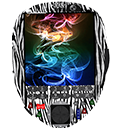 1+1) AMIR-M15
1+1) AMIR-M15
 2) AMIR-R9
2) AMIR-R9
 2+1) AMIR-R15
2+1) AMIR-R15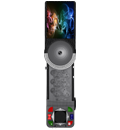
 3) AMIR-SPACEPORT15
3) AMIR-SPACEPORT15
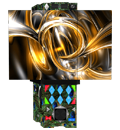 4) AMIR-D60
4) AMIR-D60
 4+1) AMIR-ET49
4+1) AMIR-ET49
 5) AMIR-4R15
5) AMIR-4R15
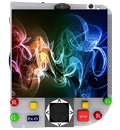 6) AMIR-FTR9
6) AMIR-FTR9
 6+1) AMIR-FR15
6+1) AMIR-FR15
 7) AMIR-B9
7) AMIR-B9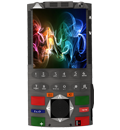
 7+1) AMIR-HEC15
7+1) AMIR-HEC15
 7+2) AMIR-B15
7+2) AMIR-B15
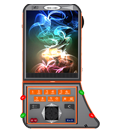 8) AMIR-LR55
8) AMIR-LR55
 9) AMIR-BANANA17
9) AMIR-BANANA17
 10) AMIR-H2H15
10) AMIR-H2H15
 11) AMIR-GP15
11) AMIR-GP15
 12) AMIR-4GR15
12) AMIR-4GR15
 13) SANDS&SHELLS55
13) SANDS&SHELLS55
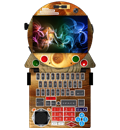 14) AMIR-GS60
14) AMIR-GS60
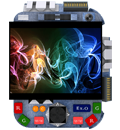 15) AMIR-PPC/G57
15) AMIR-PPC/G57
 16) AMIR-TPPC/G63
16) AMIR-TPPC/G63

 1) AMIR-M9
1) AMIR-M9
 1+1) AMIR-M15
1+1) AMIR-M15
 2) AMIR-R9
2) AMIR-R9
 2+1) AMIR-R15
2+1) AMIR-R15
 3) AMIR-SPACEPORT15
3) AMIR-SPACEPORT15
 4) AMIR-D60
4) AMIR-D60
 4+1) AMIR-ET49
4+1) AMIR-ET49
 5) AMIR-4R15
5) AMIR-4R15
 6) AMIR-FTR9
6) AMIR-FTR9
 6+1) AMIR-FR15
6+1) AMIR-FR15
 7) AMIR-B9
7) AMIR-B9
 7+1) AMIR-HEC15
7+1) AMIR-HEC15
 7+2) AMIR-B15
7+2) AMIR-B15
 8) AMIR-LR55
8) AMIR-LR55
 9) AMIR-BANANA17
9) AMIR-BANANA17
 10) AMIR-H2H15
10) AMIR-H2H15
 11) AMIR-GP15
11) AMIR-GP15
 12) AMIR-4GR15
12) AMIR-4GR15
 13) SANDS&SHELLS55
13) SANDS&SHELLS55
 14) AMIR-GS60
14) AMIR-GS60
 15) AMIR-PPC/G57
15) AMIR-PPC/G57
 16) AMIR-TPPC/G63
16) AMIR-TPPC/G63




 A superior and ergonomic design of the
A superior and ergonomic design of the 


























